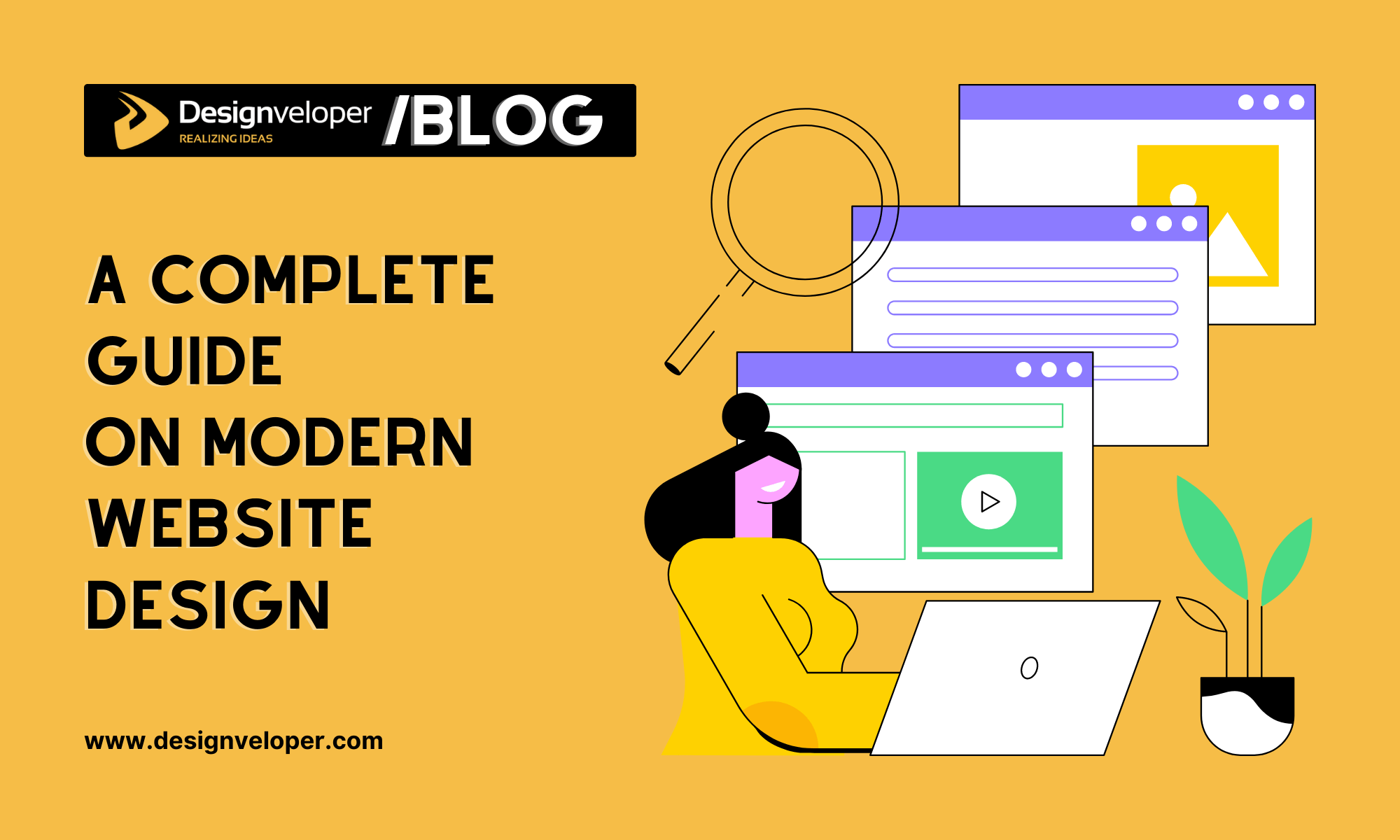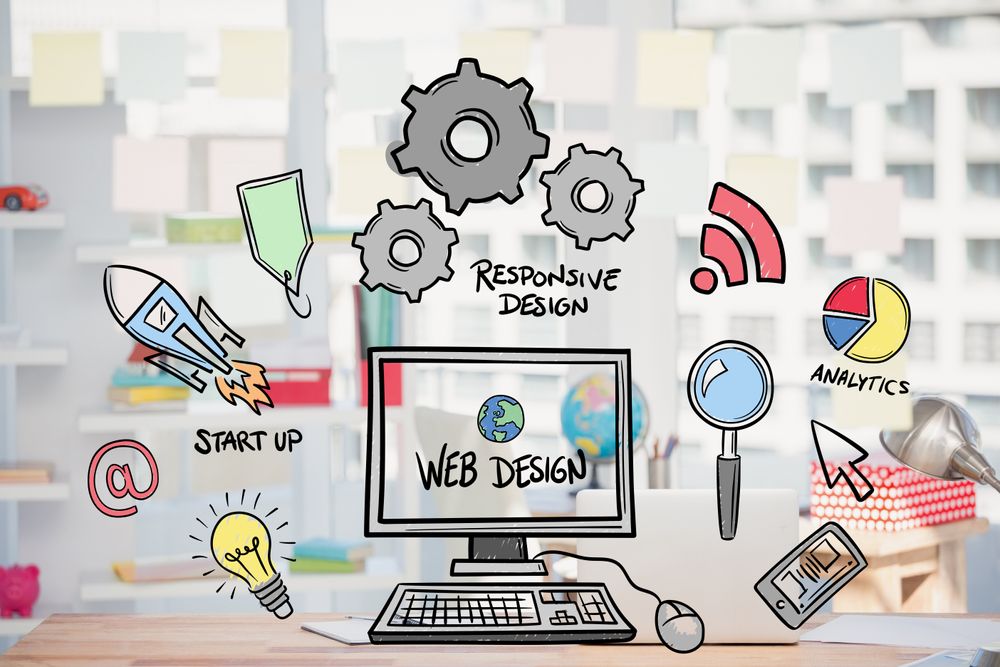Exploring the Latest Innovations in Website Design for Enhanced Functionality
Exploring the Latest Innovations in Website Design for Enhanced Functionality
Blog Article
Modern Web Site Layout That Catches Focus and Transforms
In an increasingly digital landscape, modern internet site layout has actually emerged as a critical variable in capturing customer interest and driving conversions. As we discover these necessary components, it comes to be clear that comprehending their interplay can considerably influence a web site's performance and customer complete satisfaction.
Value of Visual Pecking Order
Visual hierarchy is a crucial element in internet site design, as it overviews users' focus and boosts their general experience. By strategically arranging material, designers can route customers to the most vital info first, thus enhancing interaction and enhancing usability. Efficient aesthetic pecking order utilizes numerous methods, consisting of size, contrast, color, and spacing. Larger elements naturally draw the eye, while contrasting colors can highlight essential messages, making them stand apart among more restrained parts.
Including a logical flow in material plan is vital; for example, positioning the most crucial details on top of a page fosters prompt recognition. Consistent use of typography, such as varying font dimensions and designs, aids develop a clear content framework. This organization not just help in navigation yet likewise builds trust, as individuals feel much more comfortable when they can easily find what they are searching for.
Eventually, a well-executed aesthetic power structure not just boosts aesthetic allure yet additionally dramatically affects user actions. By prioritizing crucial elements and ensuring a smooth experience, developers can successfully convert visitors right into customers, enhancing the significance of this fundamental design principle in contemporary web site development.
Responsive Style for All Devices
Creating a seamless experience across various gadgets is essential in today's digital landscape, where individuals gain access to websites from mobile phones, desktops, and tablet computers alike. Responsive design is a critical method that makes sure internet sites adapt fluidly to different screen sizes, resolutions, and positionings. By utilizing versatile grids, photos, and CSS media inquiries, designers can create formats that maintain visual stability and performance, no matter of the device being utilized.
The importance of responsive design expands past appearances; it directly influences customer interaction and conversion rates. A website that works well on all gadgets encourages longer sees and minimizes bounce prices, as users are much more most likely to connect with content that is very easy to browse. Search engines, specifically Google, focus on mobile-friendly websites in their positions, making responsive layout a crucial component of search engine optimization (SEARCH ENGINE OPTIMIZATION)
Integrating receptive style not only boosts user experience however likewise improves the growth process. By creating a single site that works across tools, companies can conserve time and sources contrasted to developing separate mobile and desktop variations. Ultimately, receptive design is an essential method for modern-day website design, making sure accessibility and complete satisfaction for all users, no matter of their tool.
Engaging Interactive Elements
While a responsive design prepares for a practical web site, including appealing interactive aspects is important for recording individual interest and fostering deeper links. Website Design. Interactive elements, such as animations, tests, and clickable infographics, develop a much more dynamic user experience, motivating visitors to spend more time on the website
Incorporating interactive features can additionally direct customers through complicated info, making it simpler to absorb web content. Interactive sliders can highlight product variants, while embedded video clips can supply demos or reviews that resonate even more than fixed pictures or message. Furthermore, gamification methods, like incentives for engaging or completing jobs with web content, can boost customer motivation and retention.
Effective usage of interactive elements not only enriches the user experience however can also lead to greater conversion prices. It is crucial to stabilize interactivity with efficiency; overly complicated attributes may impede website speed, negatively influencing individual satisfaction.
Streamlined Navigation Practices
Effective navigation is a foundation of any kind of successful internet site, as it directly affects individual experience and material accessibility. Streamlined navigating methods ensure that customers can quickly locate details, boosting their interaction with the website. A well-structured navigation food selection need to this website be easy and intuitive, typically including a restricted number of primary categories to avoid overwhelming site visitors.
To attain structured navigation, developers should prioritize a hierarchical framework that practically arranges material. Implementing breadcrumb trails can supply users with context about their present area within the site, permitting for smooth backtracking. Furthermore, using drop-down food selections can properly preserve room while still offering accessibility to subcategories.
Receptive design is essential, as navigation needs to be useful throughout all devices (Website Design). Mobile customers, in particular, benefit from touch-friendly menus and collapsible areas that maintain functionality without compromising appearances

Effective Call-to-Action Methods
A well-crafted call-to-action (CTA) is crucial for directing individuals toward desired outcomes on a web site, as it encourages them to engage with content or buy. To optimize their efficiency, CTAs must be clear, compelling, and purposefully positioned throughout the site.
First, use action-oriented language that connects seriousness or value, such as "Start," "Sign up with Now," or "Insurance claim Your Price cut." This language not just encourages individuals however additionally sets clear expectations regarding the following steps.
2nd, think about style elements; CTAs ought to stand apart aesthetically with contrasting shades, adequate whitespace, and famous positioning. A switch that is simple to see and click boosts the possibility of individual interaction.
Additionally, check this site out customizing CTAs based on user habits or demographics can considerably boost involvement. Tailored messages reverberate much more with users, driving greater conversion rates.

Final Thought
In conclusion, modern-day website layout emphasizes the assimilation of visual pecking order, responsive formats, involving website link interactive elements, structured navigating, and efficient call-to-action approaches. These elements jointly improve customer experience, making certain that site visitors continue to be involved and motivated to discover content better. By focusing on these layout concepts, businesses can dramatically improve individual retention and conversion prices, eventually resulting in higher success in the digital landscape. The continuous development of internet layout highlights its important role in efficient on the internet communication and advertising and marketing.
In an increasingly electronic landscape, modern-day internet site style has actually emerged as a pivotal element in capturing user interest and driving conversions.Aesthetic hierarchy is an essential component in site layout, as it guides individuals' interest and improves their general experience.The relevance of receptive design extends past appearances; it directly impacts customer interaction and conversion prices.Incorporating responsive style not just boosts individual experience but also simplifies the development process. Eventually, receptive layout is a basic technique for contemporary internet site style, guaranteeing ease of access and complete satisfaction for all users, regardless of their device.
Report this page